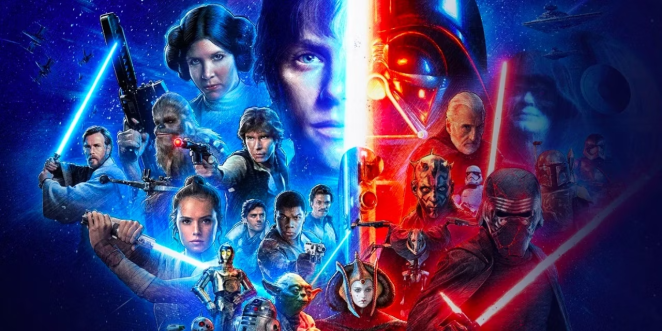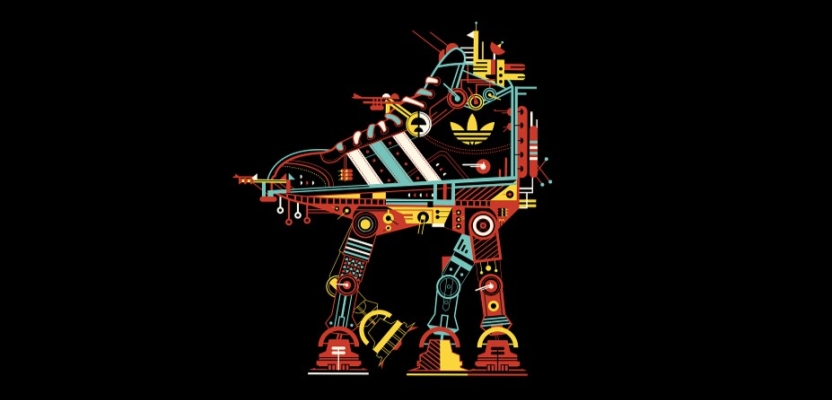If you’d have told me when I was 12 years old that there would come a time where I was sick of new Star Wars content I’d probably have laughed in your face, but here we are 26 years later. But how did we get here?
A decade ago, it seemed like Disney had struck gold. With the acquisition of Lucasfilm and the Star Wars franchise alongside their earlier purchase of Marvel (both for a terrifyingly hefty sum of $4 billion), Disney was poised to dominate the entertainment landscape. This ambitious investment led to a sprawling empire of blockbuster comic book movies and a new wave of Star Wars films and TV shows, serving as the cornerstone of Disney Plus, their burgeoning streaming platform.
Fast forward to 2024, however, and to the landscape has shifted would be a grave understatement. While the pipeline for Marvel and Star Wars content is still full, the dominance these franchises once held has waned, with the biggest box office hits coming from unexpected sources like Barbie and Super Mario Bros and the most popular streaming shows hailing from Netflix and Amazon, not Disney Plus.

What was once a near-flawless streak of high-quality content has become increasingly erratic, shifting the conversation from "everything is great" to "some things are still good." The root of this instability arguably lies in oversaturation. By flooding the market with content, Disney has inadvertently diluted the impact of its most valuable franchises, leading to a situation where even devoted fans are finding it hard to keep up.
As Marvel and Star Wars struggle to maintain their former glory, there are crucial lessons to be learned for brands across all industries. This article will explore how the perils of oversaturation can undermine even the most powerful brands, and what strategies can help avoid similar pitfalls.
In the rapidly evolving landscape of media and entertainment, Disney's handling of its major franchises—Star Wars and Marvel—offers a cautionary tale about the dangers of oversaturation. These iconic brands, once revered for their scarcity and the anticipation surrounding each release, are now facing challenges that serve as important lessons for any brand navigating today's content-driven economy.
The Oversaturation Dilemma
The concept of oversaturation in media isn't new, but it's become particularly pronounced with the rise of streaming platforms and the relentless pursuit of content to fill those platforms. Disney, wielding the immense power of the Star Wars and Marvel universes, has been at the forefront of this trend. The allure of these brands has historically been tied to their exclusivity and the event-like nature of each new release. However, in recent years, Disney has dramatically increased the output of both franchises, leading to a glut of content that risks diluting their impact.

For instance, Marvel Studios transitioned from releasing three films a year to a mix of movies and several TV series annually, turning what were once highly anticipated events into more routine occurrences. Similarly, after the mixed reception of Solo: A Star Wars Story, Disney slowed down theatrical releases but ramped up Star Wars content on Disney+, leading to concerns about the franchise losing its "specialness".
Quality vs. Quantity
One of the core issues that both Marvel and Star Wars have faced is maintaining the quality of their stories amidst this surge in output. Fans and critics alike have noted that the sheer volume of content has made it difficult for each new release to feel as essential as those that came before.
This sentiment was echoed by Disney executives who acknowledged the need to "rein in" production and focus on delivering high-quality content, rather than overwhelming audiences with a constant stream of new shows and movies.
The Culture Wars and Their Impact
Beyond issues of content volume, Disney has also found itself at the centre of ongoing culture wars, particularly with its handling of the Star Wars franchise. The polarization of audiences over perceived political messaging within Star Wars content has created a significant rift among fans.
Films like The Last Jedi sparked intense debates, with some fans feeling that the franchise was being used as a platform for political agendas, rather than staying true to its original spirit. This division has not only alienated portions of the fanbase but has also made it difficult for the franchise to maintain the broad, unifying appeal it once enjoyed.

This tension has been exacerbated by the backlash against certain characters and narratives introduced in recent Star Wars projects. For example, The Acolyte, a highly anticipated series set during the High Republic era, has been criticized heavily for its alleged incorporation of modern political themes at the expense of storytelling.
The show’s reception has been notably poor, both critically and commercially, and it is now often cited as a major failure within the Star Wars universe. This failure highlights the dangers of alienating core audiences by prioritizing current cultural debates over the established lore and character development that fans cherish.
Strategic Lessons for Brands
For brands beyond the entertainment industry, the experiences of Star Wars and Marvel under Disney's stewardship offer valuable insights:
- Scarcity Drives Value: The rarity of content can amplify its value. Oversaturation risks making even the most beloved brands feel commonplace.
- Quality Over Quantity: In a world overwhelmed with choices, high-quality, differentiated content will always stand out and resonate more deeply with audiences.
- Navigating Cultural Sensitivities: Brands must tread carefully when engaging with cultural and political issues. While it's important to stay relevant, there's a fine line between relevance and alienation. Understanding the core audience and respecting the brand’s legacy can prevent unnecessary controversies.
- Brand Integrity: Maintaining the "specialness" of a brand is vital. As seen with Star Wars, ensuring that each piece of content feels meaningful helps sustain long-term fan engagement.
Disney's journey with Star Wars and Marvel underscores the importance of balance when it comes to content creation. As brands continue to explore new ways to engage with their audiences, the lesson is clear: more isn’t always better. By carefully curating content and staying attuned to audience needs, brands can avoid the pitfalls of oversaturation and ensure that their stories continue to captivate and inspire.







